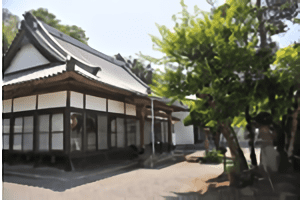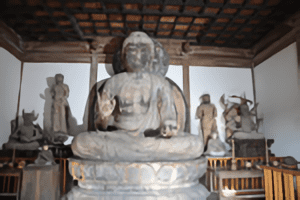National Treasure - Usa Jingu - The Spiritual Home of the Japanese People (Spiritual Spot)
It is the main shrine of Hachiman-sama throughout the country and is famous as the birthplace of the syncretism of Shinto and Buddhism. During the Nara period, the god Hachiman, who participated in the Hayato Rebellion, regretted killing his life and started a Buddhist Hojo-e to console Hayato's spirit, and also built Mirokuji Temple within the temple grounds. Furthermore, he supported the construction of the Great Buddha at Todaiji Temple and became the guardian deity of Buddhism.
In addition, the legend of Ninmon Bosatsu, who is said to be the incarnation of the Hachiman deity, tells of the history of the syncretism of Shinto and Buddhism that flourished on the Kunisaki Peninsula as the Rokugo Manzan culture. Why not take a leisurely stroll through the spiritual hometown that the Japanese have forgotten?
In addition, the legend of Ninmon Bosatsu, who is said to be the incarnation of the Hachiman deity, tells of the history of the syncretism of Shinto and Buddhism that flourished on the Kunisaki Peninsula as the Rokugo Manzan culture. Why not take a leisurely stroll through the spiritual hometown that the Japanese have forgotten?
Usa Course - The Shrine and Nearby Temples
Mode of transportation: walking
Time required: 2 hours
1. Yawata Parking Lot/Tourist Information Center
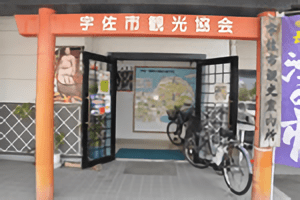
The parking lot for visiting Usa Jingu Shrine is called Yawata Parking Lot, and it faces the south side of National Route 10. Turn south at the traffic light intersection and you will find the JA Fureai Market, inside which is the Usa City Tourism Association/Tourist Information Center. In addition to providing information on nearby tourist destinations such as Usa City, the Kunisaki Peninsula, Beppu, Yufuin, Nakatsu, and Yabakei, we also provide electric bicycle rentals and tourist guide services.
2. Usa Shrine
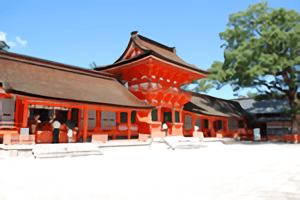
The main hall of the upper shrine of Usa Jingu Shrine consists of three shrines that enshrine the deities of Hachiman no Okami (Emperor Ojin), Hime no Okami, and Empress Jingu. Both shrines are unique in that they have two buildings, the front hall and the back hall, that touch each other, and are designated as national treasures as Hachiman-zukuri. The precincts are vast, approximately 60 hectares, of which approximately 30 hectares are designated as national historic sites, and 5 hectares of primeval forest on Mt. Ogura are designated as national natural monuments, giving visitors a sense of a sacred place.
3. Entsuji Temple
The oldest Rinzai sect temple in the prefecture (Kamakura period). The founder, Miko Eison, worked hard to restore Mirokuji Temple, which was within the grounds of Usamiya, and Usamiya designated this temple as Jinguji. The fact that the Omotesando of Usa Jingu Shrine is an extension of the approach to Entsuji Temple also shows the close relationship between the two (a syncretism of Shinto and Buddhism).
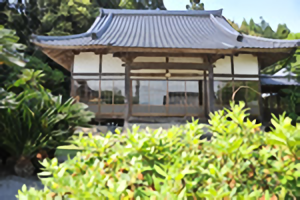
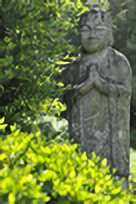
Four. Darakuji Temple (Koyasan Shingon sect)
Photo It was founded in 1333 by Usamiya Daiguji Itotsu Koren as a temple dedicated to Emperor Go-Daigo. The family temple of the Itotsu family. 7 statues of Maitreya Buddha, side attendants, and the Four Heavenly Kings are enshrined in the main hall, and this is the only temple in the prefecture where all of them have been designated as nationally important cultural properties. Admission fee: 1 person = 300 yen (for groups of 20 or more, 1 person = 200 yen)
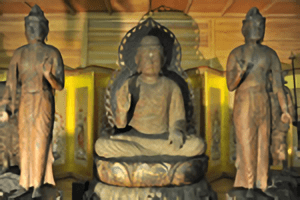
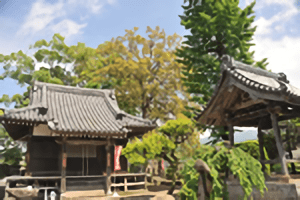
Five. Gokurakuji Temple (Jodo Shinshu Honganji School)
Photo Even after the separation of Shinto and Buddhism in the Meiji era, it remained near Hatsuzawa Pond in the Usamiya precincts, but was moved to its current location during the large-scale construction in the Showa era. The main statue of Amida Nyorai was moved from the Dai-ni-do Hall (donated by the Vice-Minister of Dazaifu) near the Ema-do Hall, and the approximately 2.8m tall Maitreya Buddha was moved from the Mirokuji Hall. Both are prefecture-designated tangible cultural properties.
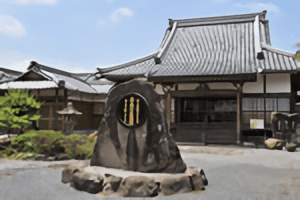
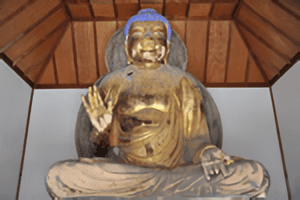
6. Daizenji Temple (Soto sect)
Photo: The family temple of the Oyamada clan, a family of the Ogami clan, the chief priest of Usamiya. The approximately 3m seated statue of Yakushi Nyorai enshrined in the Zendo was the principal image of the main hall of Mirokuji Temple, but was moved during the Meiji era when Shinto and Buddhism were separated. As a Buddhist statue from the Kamakura period, it has been designated as a nationally designated important cultural property. Other legends include Nikko Bodhisattva and Moonlight Bodhisattva.
